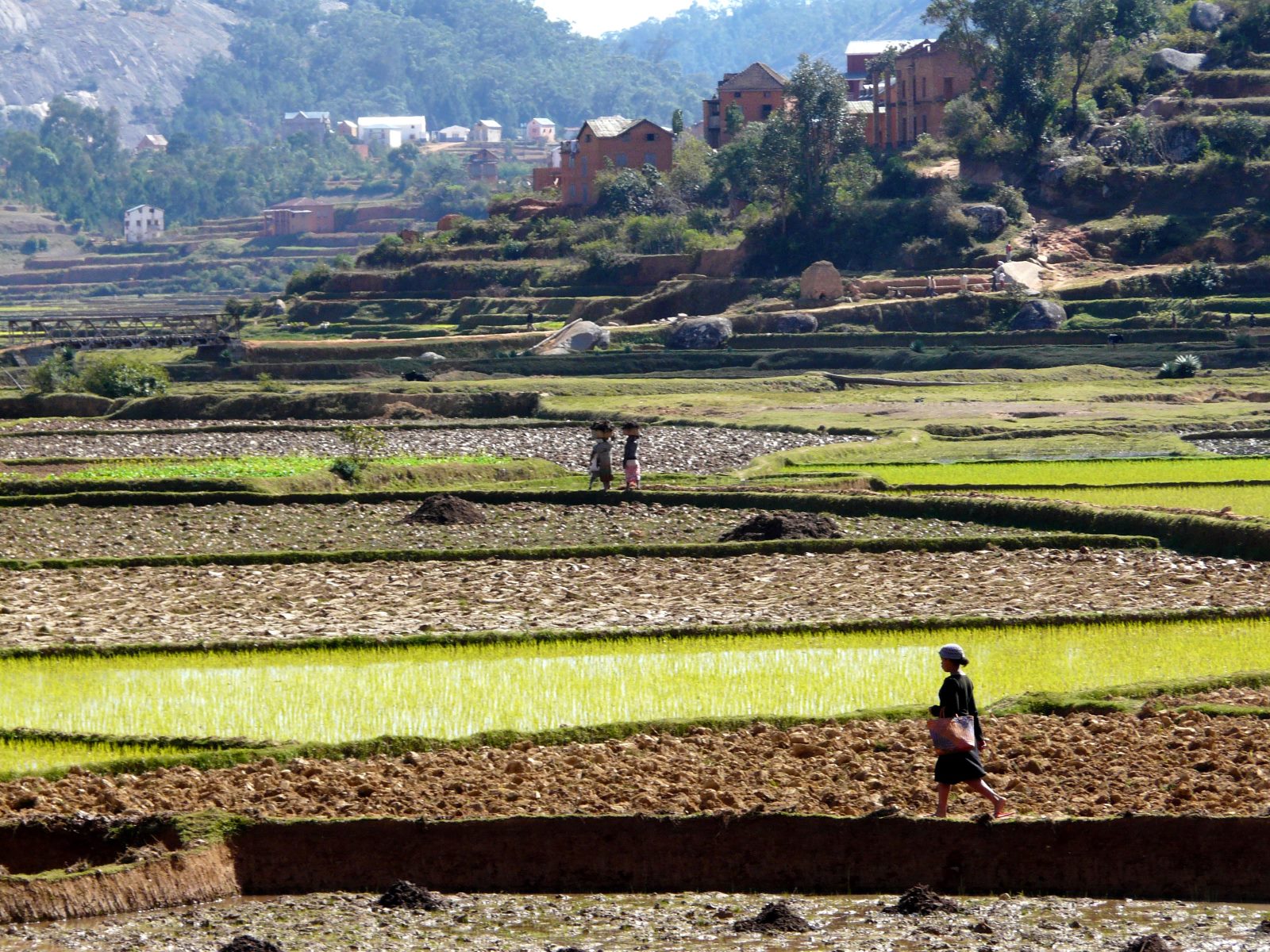
Madagascar Biodiversity still exists, along with a distinctive culture that brings together 18 officially recognized tribes
George Rush has had a long-time fascination for Madagascar, finally venturing there to discover the nature and culture of the isolated island nation
photographed by the author
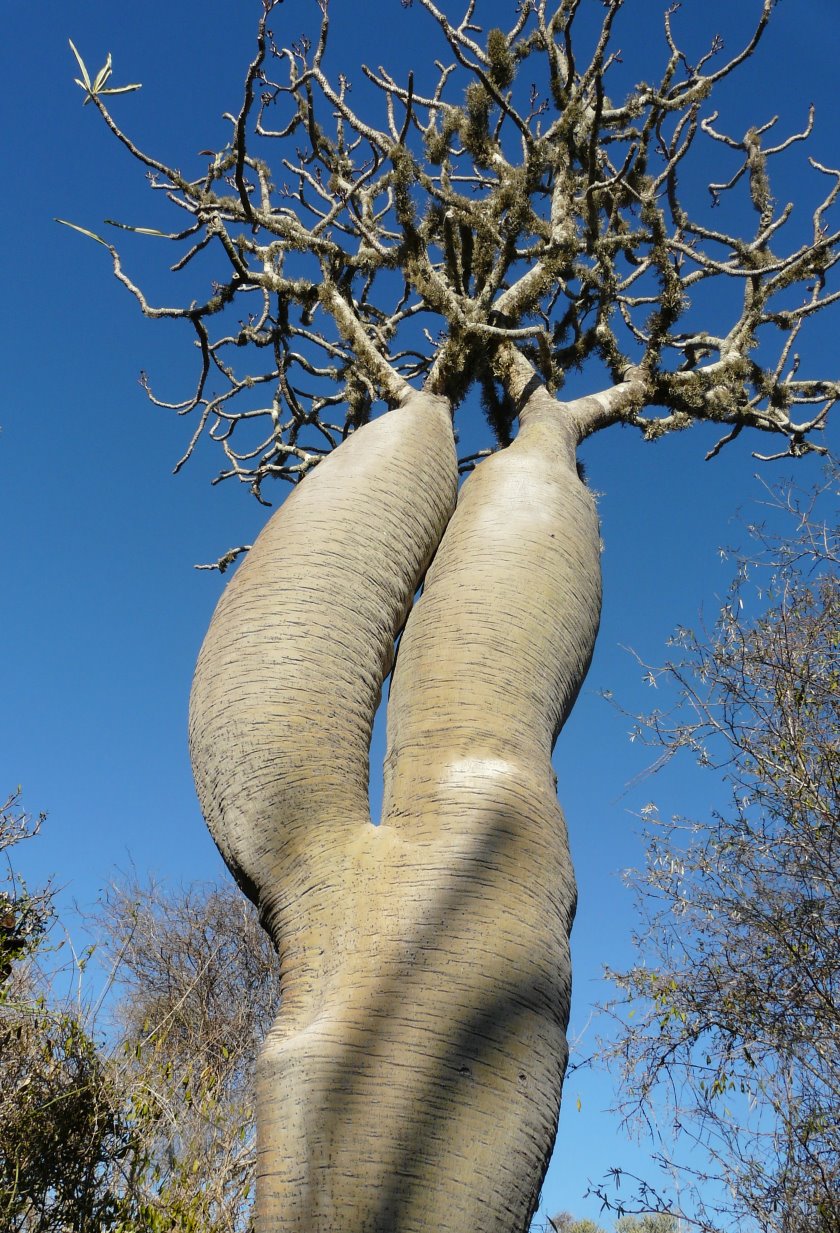
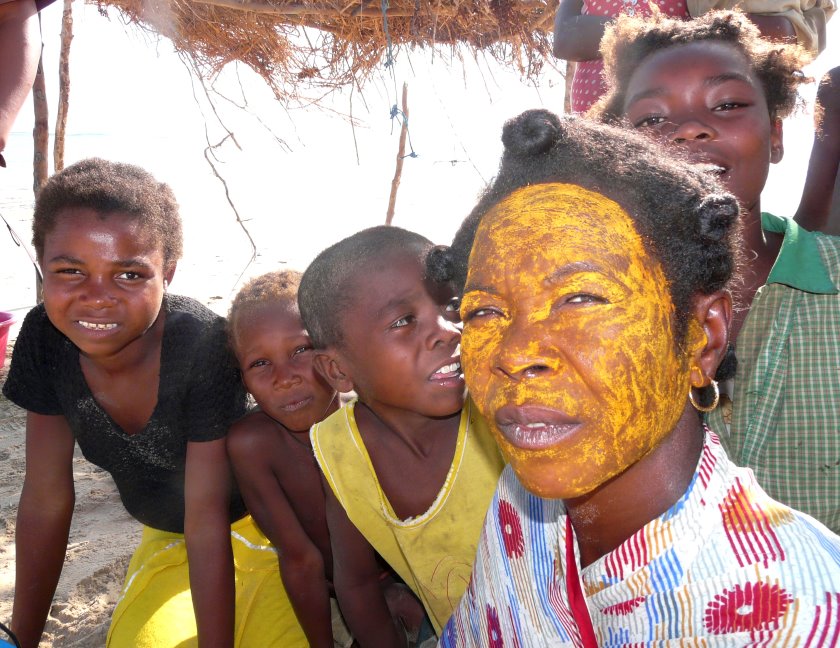
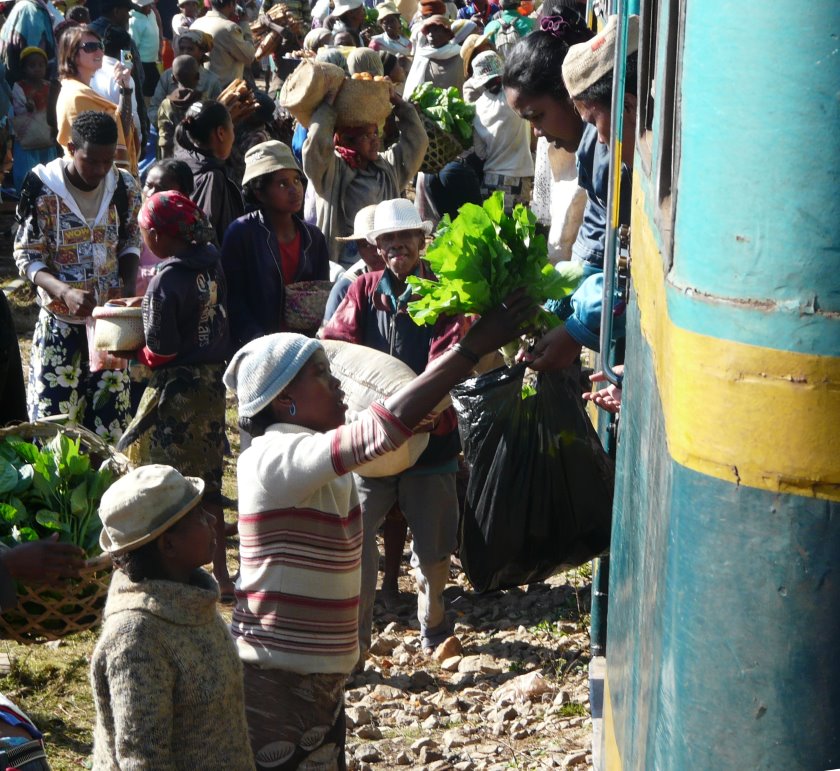
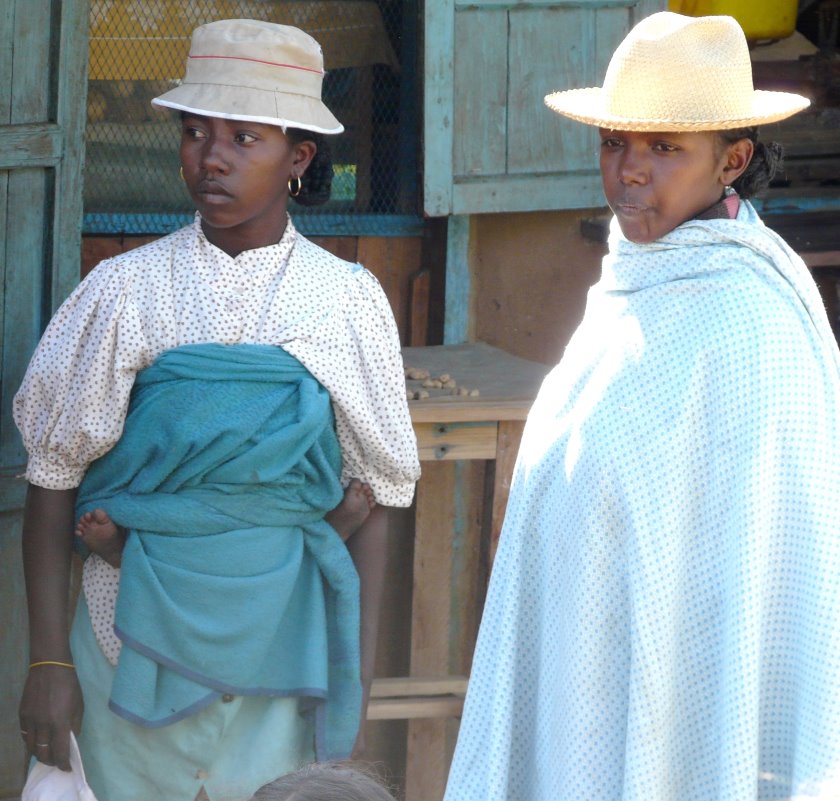 Above, from top: A baobab tree in the Reniala Reserve's spiny forest. Vezo women protect their skin with farafatry sap. Vendors ply their wares to passengers on one of the world’s steepest rail journeys. Essential attire for the Malagasy: hats and lambas.
Above, from top: A baobab tree in the Reniala Reserve's spiny forest. Vezo women protect their skin with farafatry sap. Vendors ply their wares to passengers on one of the world’s steepest rail journeys. Essential attire for the Malagasy: hats and lambas.
‘Making Excuses on the Road in Madagascar’ is George Rush’s first article for Lucire. Previously he has contributed pieces to Vanity Fair, Rolling Stone, Esquire, The Wall Street Journal, Condé Nast Traveler, Men’s Journal, Departures, Travel & Leisure, and Spy, among others.
During a long sojourn at the New York Post, he and partner Joanna Molloy authored almost 4,000 ‘Rush & Molloy’ column servings of breaking news about film, politics, finance, media, music, television, fashion and sports, to an international audience of 12·5 million readers online and in print. His interview subjects have included Bill and Hillary Clinton, Richard Branson, Tom Cruise, George Clooney, Brad Pitt, Angelina Jolie, Jay-Z, Beyoncé, Oprah, Madonna, Diddy, Bono, and other one-named people.
Rush and Molloy share their sometimes harrowing brushes with fame in their memoir Scandal: a Manual.
Thank you for reading this article about Madagascar. I’m sorry it isn’t better. There are far superior accounts of the world’s oldest island. Eminent scholars have long tried to fathom how the Malagasy people reached this land off Africa’s southeast coast and why over 90 per cent of its species are found nowhere else on earth. But, considering that you’ve waded this far into the story, please sit down, enjoy a drink, perhaps a snifter of the local pok pok-infused rhum, while I implore my dead relatives to help me grapple with this nation’s intricate culture and dazzling biosphere.
I’ve started with this disclaimer because, in Madagascar, all public oratory, or kabary, demands that a speaker apologize in advance for any gaffe. A great orator, or mpikabary, will proclaim his utter worthlessness—then launch into a soliloquy that blows the crowd away with artfully braided proverbs, parables and poetry. Whether he’s speaking on behalf of a bride groom or a political candidate, the skilled mpikabary will also take care never to say exactly what he means, because that would be obvious and inelegant and, potentially, insulting.
Take Rereraky Makida. I could see he was a master of this discipline. Like most mpikabary, Reraraky was an older man. I met him in the southwestern village of Miary, where I’d come to see a sacred grove of banyan trees. I was told that the 87-year-old Rereraky must grant me entrance to the walled arboretum. While someone went to fetch him, I heard musket shots. It turned out that members of the Masikoro tribe were celebrating a circumcision by blasting a boy’s foreskin into the sky. Happily, the villagers had given up on the catering tradition of serving guests the foreskin on a brochette. They did invite me to join in some post-operative dancing. After being passed around by three or four ladies, I was relieved when the grey-bearded Rereraky appeared to let me into the sacred grove.
Unlocking the gate, he said, ‘If you come here on your own, the spirit of the ancestors will destroy you.’
I promised to remember that. Taking off my shoes, I asked about the history of the grove.
‘Many years ago, the river would flood the village,’ Rereraky began, his elocution as florid as the grove’s twisted branches. ‘They asked their king for help. He said they would need to change the course of the river. To do that, the king said, they must make a sacrifice.’
According to Rereraky, two parents from his clan offered their 12-year-old daughter, Pelavolo. She was buried alive in this grove. As promised, the river re-routed itself. From Pelavolo’s grave grew one of the largest banyans in Madagascar.
Red cloth, cow skulls and half-burned candles decorated its gnarled trunk, which was said to produce blood when you cut it. The villagers believed that the girl dwelled in the tree.
‘She answers prayers,’ Rereraky said.
I rolled my eyes behind my sunglasses. As I walked out of the grove, a low branch smacked me on the forehead, causing my own red sap to flow. I had new respect for that girl.
***
Unworthy as I am as a narrator, I do boast a long infatuation with the world’s fourth largest island. As a kid, years before Dreamworks made the lemurs ‘move it, move it,’ I fixated on that weird creature that flipped its long middle finger at me when I opened the dictionary—the aye-aye. My curiosity about the ‘eighth continent’ deepened as I read about the flora and fauna that got stranded on the island when it broke off from India 88 million years ago. I’d read that these unique castaways were now in grave danger. In the early ’90s, I also got into the island’s music, made with instruments that, like its wildlife, existed nowhere else. I became so smitten with a Malagasy singer named Hanitra Rasoanaivo that my wife called me ‘her New York groupie.’ Around the same time, I saw Jeremy Marre’s documentary, The Left-Handed Man of Madagascar, about roving theatrical troupes—called hiragasy—that perform during the annual season when families reconnect with their departed relatives by digging them up and inviting them to a party. The mortuary carnival was called a famadihana and I became determined to see one.
Considering that this three-week ramble across the 2,543-mile-long island might involve grisly disinterment, I asked my 13-year-old son, Eamon, if he’d like to join me. He said he was in. After flying over 20 hours from New York, we arrived in the capital of Antananarivo—Tana, for short—nestled in the country’s central highlands. This being August—the dead of winter—men and women along the airport road were wrapped in their lambas—the national shawl, woven of cotton or silk. Their headgear was a milliner’s fantasy of raffia fedoras, trilbies, and pork pies. About 2·1 million people live in sprawling Tana. Most are from the Merina tribe, the largest and most powerful of 18 officially recognized ethnic groups. The Merina’s Asiatic faces corroborated the prevailing theory that Madagascar’s first settlers sailed from Indonesia about 2,000 years ago. So did the terraced rice paddies they tended.
The country followed us into the city. Lumbering through the honking traffic was one of the revered zebu, its bovine dewlap flapping like a ’70s necktie. Jostling for space with the cattle and the rattling bullock carts were the sputtering remnants of French rule—cream-coloured Citroën 2CV taxis. They idled in front of the stately 1910 train station that still bore the city’s colonial name, Tananarive. After tooling through the poorer warrens of the lower town, we ascended the switchback streets of Analamanga, a 4,819 ft hill clustered with nineteenth-century brick-and-terracotta houses. At the top stood the palace ruins of Queen Ranavalona I (1828–61), whose cruel inquisitions and military campaigns are estimated to have claimed the lives of three million of her subjects. Subsequent leaders have been comparatively kinder. But as recently as 2009, guards shot and killed at least 50 protestors outside the palace of then-president Marc Ravalomanana. A military coup followed. Many western nations slapped sanctions on the ‘caretaker’ régime, depriving the Malagasy of badly needed foreign aid. It wasn’t until 2013 that democratic elections put current president Hery Rajaonarimampianina in office. But Madagascar remains one the 13 poorest countries in the world.
***
Hoping to make a small effort to help, we flew the next morning to the southeast coast, where we were due to volunteer for the development agency Azafady.
We landed in Fort Dauphin and headed into the countryside with some other Azafady hands. It was a paradoxical terrain, decorated with Alpine conifers one minute and coconut palms the next. The roads nearly disemboweled us. But, moving from village to village over the next week, we did pick up a few skills. We learned how to mix cement and build desks for a new school (the Azafady organization’s 17th). We learned how to make a stove out of sand, clay, and zebu poop—the stove’s beauty being that it needed 75 per cent less firewood. We also learned a bit about frogs. Taking part in a census of endemic species, we set out into the forest at night. Howls and shrieks and ribbets leapt out of the dark. A crab spider loomed on its six-foot web. The red eyes of a tree snake glowed overhead. It was a little harrowing at first. But biologist Sheila Funnell reminded us that there were no venomous reptiles in Madagascar. In fact, unless you went looking for the endangered Nile crocodile, nothing here wanted to hurt you.
Long before the conservationists arrived, many of Madagascar’s creatures came under the protection of a system of beliefs called fady. For instance, the people of Ambohimanga don’t harm geese because their honks once warned of thieves. But fadys can also bite. My childhood dictionary friend, the aye-aye, is seen as a harbinger of evil and therefore must be killed on sight. Foreigners, known as vazaha, could also be menacing. Parents long told their children that we’d steal their livers.
The Malagasy—52 per cent of whom practice ‘indigenous beliefs’—are enormously welcoming and forgiving of vazaha. Still, depending on where you are in the country, you can violate etiquette, or fomba, by pointing, singing at dinner, or handing someone an egg. ‘You can’t take a cat in a car,’ one veteran volunteer told us during our farewell work-site dinner of rice and beans. ‘Or a dead body. I have a friend whose car broke down. He discovered someone’s ashes in his trunk.’
‘You laugh,’ said our work team supervisor, Rachel MacLachlan. ‘But the longer you spend here, the more you believe in this stuff.’
***
Having contributed our smidgen of service, we boarded a flight over the country’s mountainous spine to Tulear on the southwest coast. On the plane, we hooked up with our guide, Vy Raharinosy, a puckish former sitcom actor. Waiting for us at the airport was Parson Ramiandrisoa, our brawny, genial driver. Together, we proceeded north, up the arid coast, to the Reniala Reserve in the village of Itafy. Its spiny forest was a surrealist gallery of thorny plants that scoffed at the notion of water. Radiated tortoises and long-tailed ground rollers gambolled around the succulent tentacles of the Octopus tree (Didierea madagascariensis). Along the trail, we found Botero-like baobabs striking poses—one doing a handstand, another taking a bow, still another sitting on a bidet. The biggest, more than 33 ft around, is believed to be over 1,000 years old.
At the end of the day, we settled into a bougainvillea-hedged beach resort, La Mira de Madio Rano, run by French-born Dr Marcel Tonnenx, his Malagasy wife, Voahangy, and their two fearless Coton de Tuléar pooches (the national dog).
Holding court in the dining room, the 89-year-old Dr Tonnenx informed us that, since he’d arrived in Madagascar 20 years ago, ‘I’ve made love to no more than four women.’
‘Madagascar is like a drug,’ the Chevalieresque physician went on. ‘Everything is beautiful. You think everything is possible. But nothing is possible. Everything is run by a few families. Charles de Gaulle supposedly said, ‘Madagascar is a country full of hope for the future.’ It seemed like this was the last place in the world that could still be a sanctuary of biodiversity. But now you have this industrial threat. The US, France, China, Korea—they all want oil, titanium, nickel, lumber.’
The Malagasy have an ambivalent relationship with the colonists who ‘protected’ the country from 1896 until 1960. At least 30,000 people are estimated to have died during the 1947 Malagasy Uprising. Yet, despite France’s brutal repression, the republic’s first president, Philibert Tsiranana, continued to take cues from Paris, quoting the Malagasy proverb that advised, ‘You do not kick away the canoe that helped you to cross the river.’ Driving through the countryside, I saw older Malagasy men still wearing berets and playing pétanque. Cops at the ‘gendarmerie’ wore kepis. Wood-shack salons advertised coiffeur. Though the Malagasy eat more rice per capita than any people on earth, their boulangeries bake sublime baguettes. Whatever lingering resentment the Malagasy feel toward the French is mingled with a fondness for their euros and their culture. ‘When I go to Tana,’ one expat told me, ‘wealthy people speak French even at home!’
***
And yet, when it came to colonizing Madagascar, the French were arrivistes. Looking for some truly “old families”, we set out the next morning in search of some of the island’s first immigrants, the Vezo. For much of the past 2,000 years, the Vezo have been fishing the waters between Madagascar and mainland Africa in hand-carved wooden pirogues. About an hour up the coast, we found the Vezo village of Fitsitika—several hundred thatched huts sprawled across a vast sand dune. The Vezo looked much more African than the Merina. Sitting on the beach, sorting sea cucumbers, was 47-year-old Niriva Christine. Her face was coated with yellow kolimba sap, which, she explained, ‘keeps the wind from drying out my skin.’
Niriva gazed out at the Mozambique Channel, where the masts of 100 or so pirogues bobbed on the horizon. Because commercial fishing boats have encroached on the Channel, the Vezo must sail farther into dangerous waters, sometimes camping on sand bars hundreds of miles away. Niriva saw one pirogue coming ashore. Together, we helped Tovondraina Calibin haul his gaily-painted outrigger onto the beach. Tovondraina had gone out at 5 a.m. Ten hours later, all he had was a small bucket of octopus. Niriva bought it for 5000 ariary—about US$2·50.
‘It is disappointing,’ Tovondraina, 24, told us. ‘But I will go out tomorrow. I have four children.’
We asked an older fisherman, Antoine Kakalahy, when the Vezo had settled here. ‘I’m not sure,’ he said. ‘I was born here and I am 70 or 80 years old.’
Did he think the Vezo had over-fished this coast?
‘No,’ said the white-haired man in a Kung Fu Kid T-shirt. ‘The fish were meant for us to eat. But life has changed. Young men are starting to leave for Tulear if there’s a job there.’
In the foam of the waves, some little boys floated a toy pirogue. Did they still want to be fishermen?
‘Yes, yes, yes,’ they said at once.
***
It was time for us to set out on our own grand voyage north. Making our way back to Tulear, we found the southern end of National Route 7. Only about 11 per cent of Madagascar’s roads are paved. The 600-mile Route 7 is the nation’s main thoroughfare, but it too was pockmarked and had only two lanes, which were often obstructed by herds of zebu or sleeping dogs. Rolling north, we paused at some Mahafaly tombs in Andranovory. The intricacy of the wooden totems and the number of zebu skulls testified to the prominence of the deceased. The paintings on the six-foot walls paid tribute to their exploits—though I had a hard time imagining the plotline that connected pictures of mermaids, horsemen, and Titanic co-stars Leonardo DiCaprio and Kate Winslet.
Night had fallen when we pulled into the Satrana Lodge—40 safari tents arranged around a pool. Above us glistened the southern constellations that Dutch explorer Pieter Keyser had charted during his 1595 stay here. Eamon clicked on his Ipad app that connected the points of the Chameleon, the Bird of Paradise, the Toucan, and the Flying Fish.
Morning revealed that our planetarium was an escarpment-rimmed savanna whose sky seemed to dwarf Montana’s. After a café au lait, we set off into 315-square-mile Isalo National Park, one of Madagascar’s 48 reserves. Centuries before Isalo became a park, these canyons were cathedrals for the Bara people, who continue to come here to give birth and bury their dead.
The trail took us into a dry canyon where wind had carved weird shapes into the sandstone massif. We came to a cairn. Our guide, Jean Toussaint Razafimampionona, suggested we each add a stone on it.
‘If you are new here, you must pay respect to the ancestors,’ Jean explained. ‘Now they can see you.’
Though smaller tribes resent the continued dominance of their Merina conquerors, the shared language and beliefs of Madagascar’s clans have averted the ethnic bloodshed that stains much of Africa. But the island isn’t free of tribalism. The pastoral Bara, who number about 520,000 (3·3 per cent of the population), are often reviled for their “belief” in cattle rustling.
‘At 16, before he can marry,’ Jean said, ‘a Bara boy must go with others to steal a zebu from other tribes. If he is caught, the police will put him in jail, but this only makes him more popular among the Bara.’
Even their critics acknowledge the Bara’s bravery when it comes to funeral customs.
Jean pointed to caves high in the cliffs.
‘That is where the bones of the deceased are moved. Courageous men will climb up there with the remains on their backs and place them in a decorated coffin. The climbers must drink toaka gasy [rum] right before they climb. Yes, sometimes the climbers themselves die. That is why it is important to ask an astrologer to pick a burial day. If a climber falls, people say, ‘The wrong day was chosen.’
The sun rose higher as we trekked through the canyon. We were dripping sweat when, like a mirage, a palm-fringed natural pool appeared. Fed by a small waterfall, it was a bona fide Eden. And yet, Jean said, ‘The Bara leave the pools to the tourists. Even Bara who can swim will avoid dark water. People believe that spirits live there and will pull you down.’
Taking our chances, we plunged in, paddling around a divine little grotto. We encountered no spirits.
So we went looking for some. Jean had heard about a bilo ceremony—a kind of exorcism—taking place in the Bara village of Sakamaningy. There, in a thatched mud house, about 50 people had packed into a dimly lit room. Everyone was staring at a tall, dreadlocked woman dressed in a purple print dress. Her name was Nina Rasoamandrainy. Three days earlier, the villagers said, a helo, or nature spirit, moved into Nina’s body, making her sick.
Ministering to the 34-year-old woman was an ombiasa, or shaman, a handsome, 20-something man who wore a LeBron James T-shirt and clutched a zebu horn stuffed with talismans, herbs, and a barber’s scissors. He puffed a hand-rolled cigar and poured a potion over Nina’s head.
Men played drums and a kabosy, a box-shaped guitar, as Nina swayed back and forth. Women in the room chanted, ‘What do you want, helo?’
Nina whispered into the ombiasa’s ear. The helo wanted an orange Fanta.
Older members of the village started shouting at the young ombiasa—second-guessing him on his handling of the ritual.
‘I am not an expert!’ the ombiasa-in-training told them. ‘This power is given to me by the ancestors. You who know more, please let me finish.’
All the bickering may have annoyed the helo. Just then, Nina went to the window, turned around with a smile, and started chatting, as though nothing had happened. The ombiasa announced that the helo had just left.
My son, Eamon, smelled hokum. ‘I don’t believe there was a spirit, or that she was even in a trance,’ said the young sceptic.
All the same, the helo may have slipped into my subconscious. The Bara believe their ancestors speak to them during sleep. That night I had a dream in which my late mother guilt-tripped me about signing a Do Not Resuscitate order.
***
Related articles hand-picked by our editors
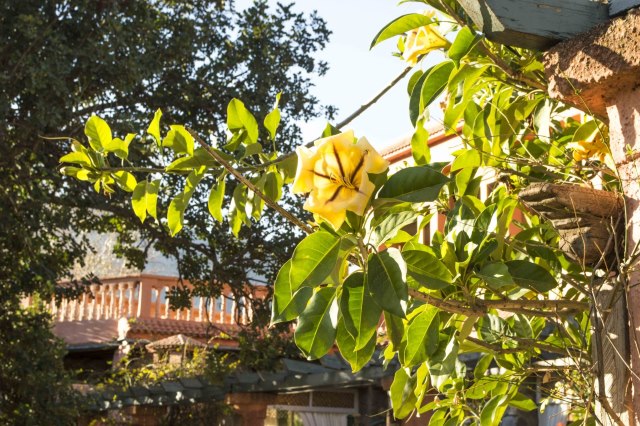
New meets old in Morocco
In our spring travel series, Stanley Moss looks at locations that successfully blend new and old, with his first stops treasured finds in the Atlas Mountains, Marrakech and Essaouira
photographed by Paula Sweet
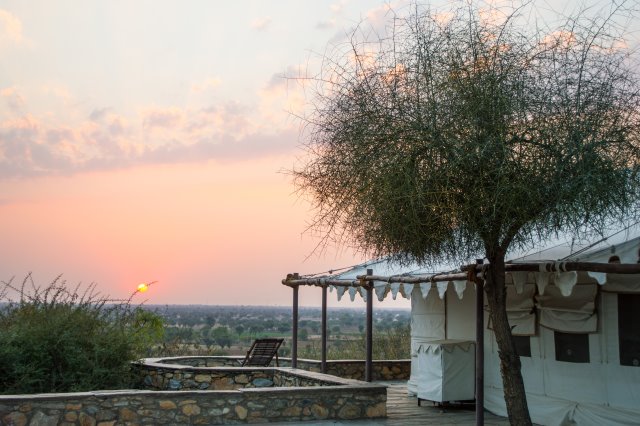
Green India
Stanley Moss discovers that ecotourism need not be the ego-driven affair that it has become in some circles. Keeping it pure, he visits Chhatra Sagar, Sarai at Toria and Samode Safari Village in India
photographed by Paula Sweet
from issue 35 of Lucire
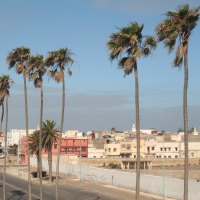 Where variety is always the spice of life
Where variety is always the spice of life
In Marrakech and along its Atlantic coast, Morocco is always in fashion by Elyse Glickman
photographed by the author
Advertisement
Copyright ©1997–2022 by JY&A Media, part of Jack Yan & Associates. All rights reserved. JY&A terms and conditions and privacy policy apply to viewing this site. All prices in US dollars except where indicated. Contact us here.